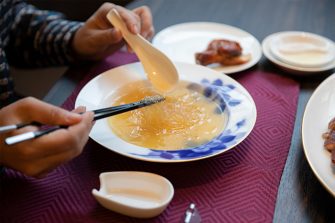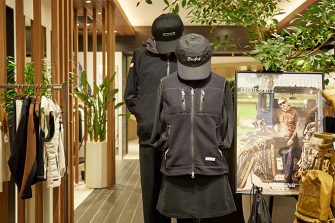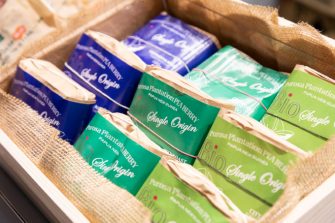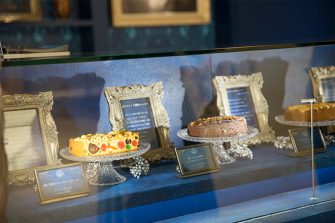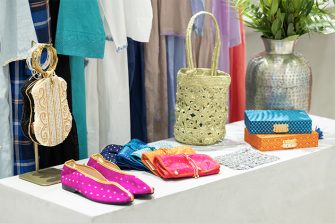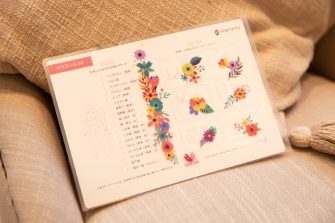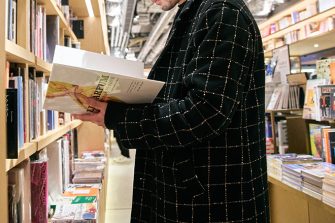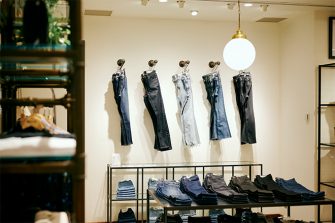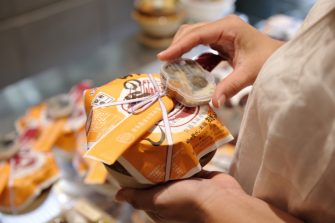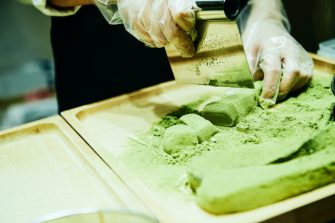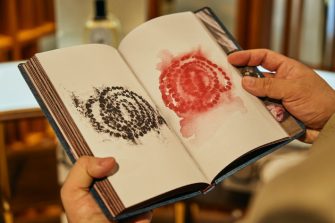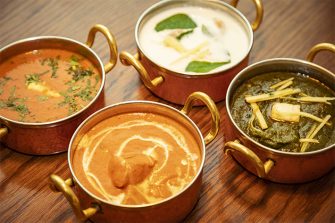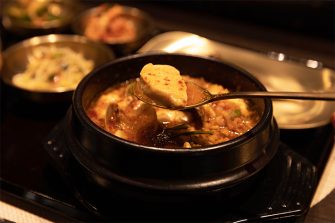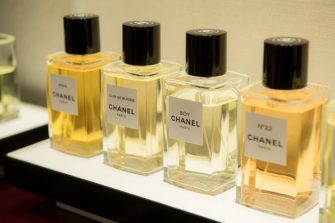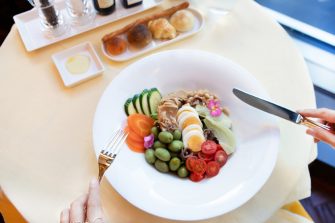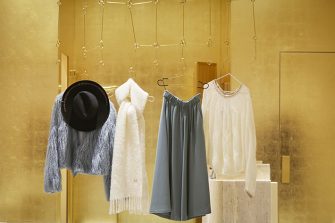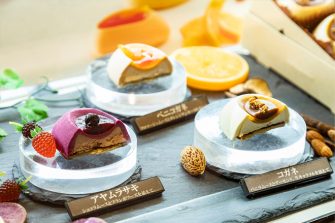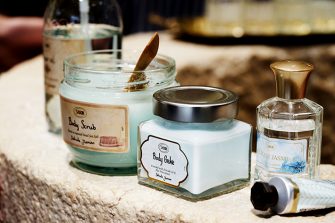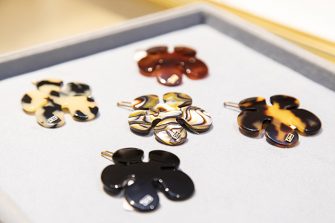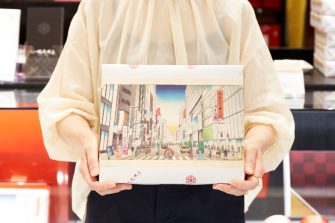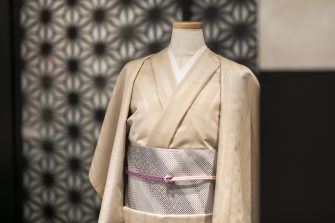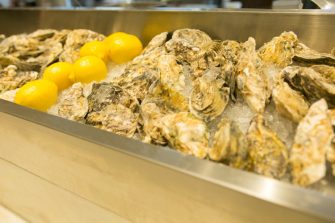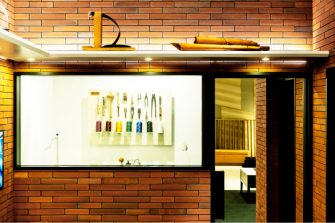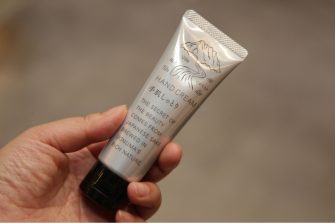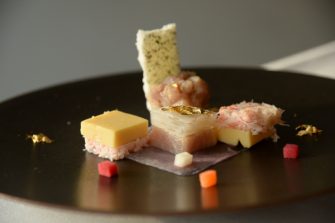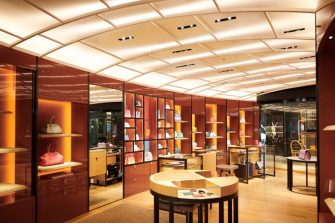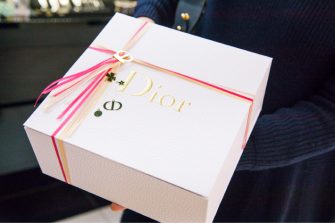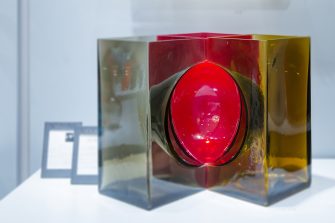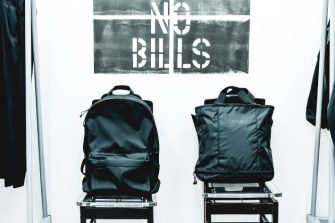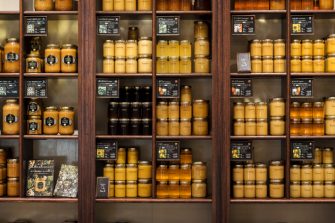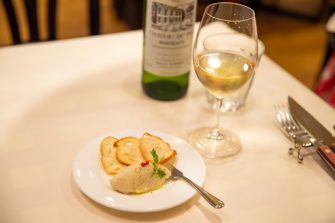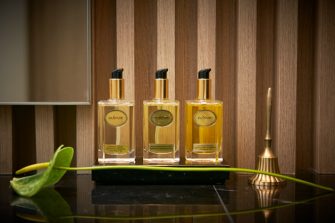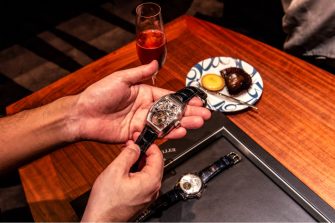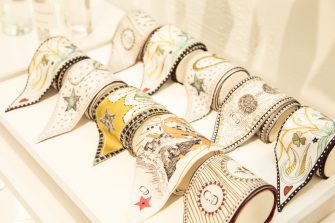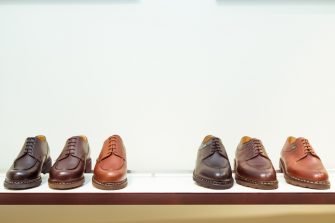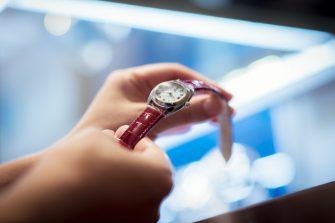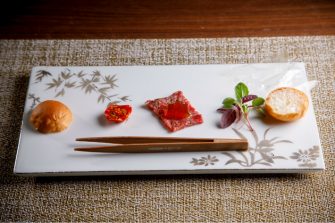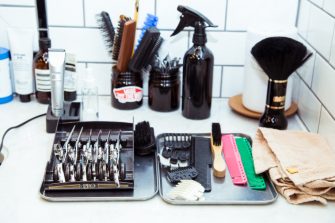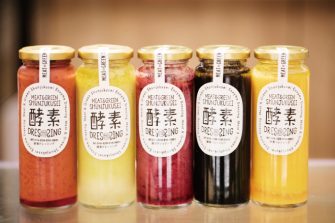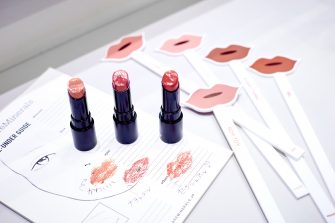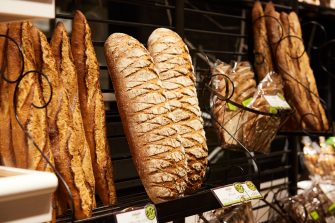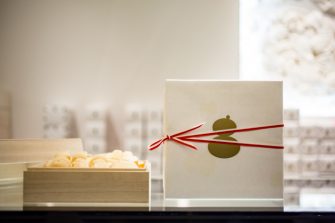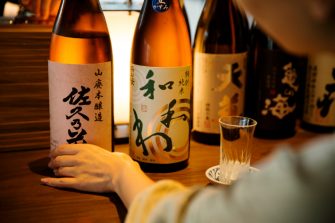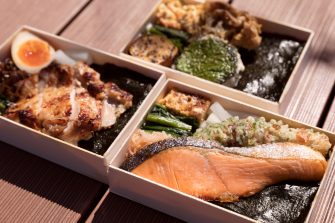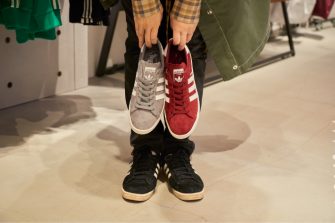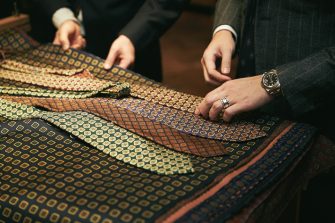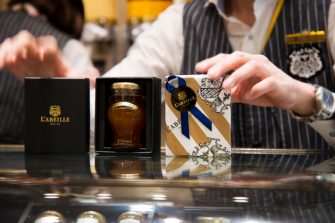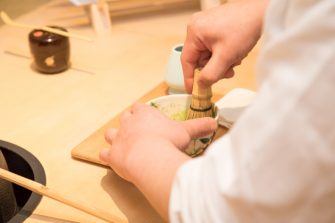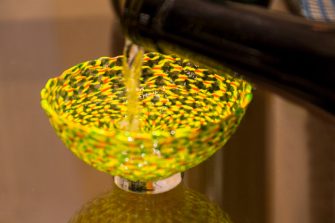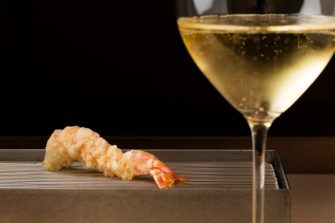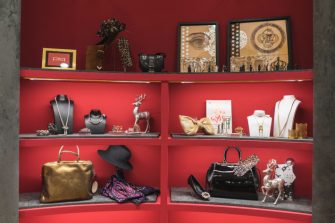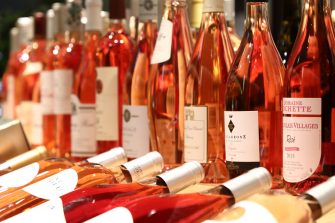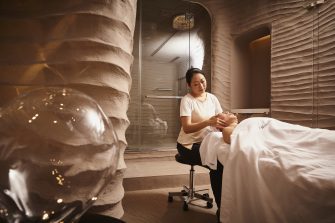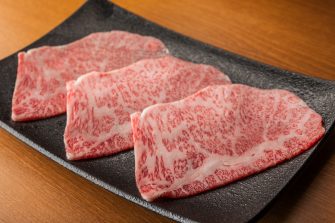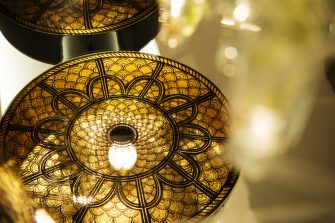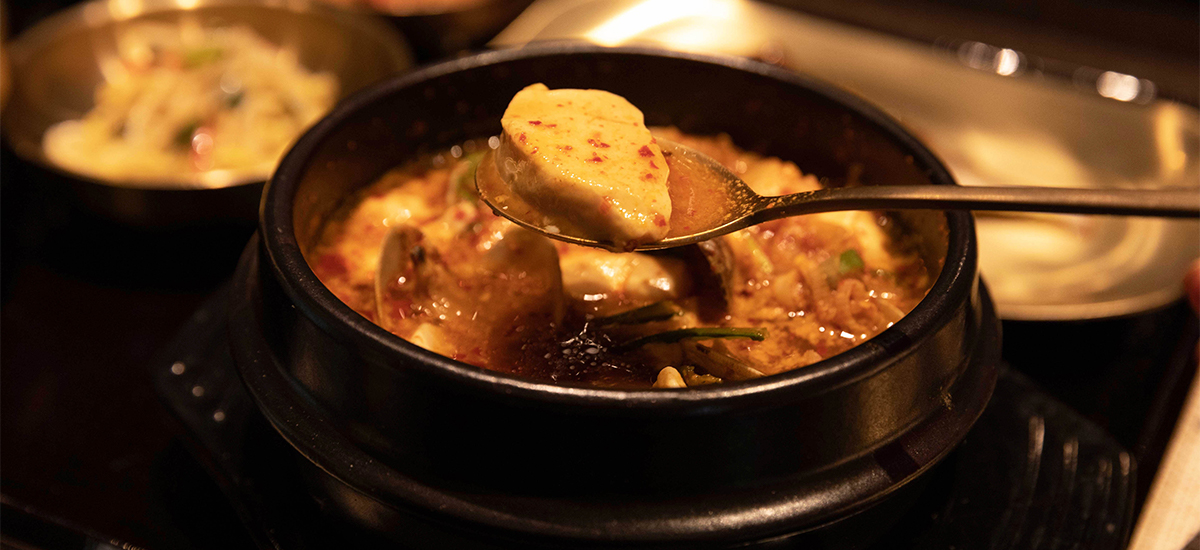

GINZA SIX EDITORS
ファッション、ジュエリー&ウォッチ、ライフスタイル、ビューティ、フード…
各ジャンルに精通する個性豊かなエディターたちが、GINZA SIXをぶらぶらと
歩いて見つけた楽しみ方を綴ります。
時にはルンバのように、銀座に戻って好奇心を充電する Like a Roomba, I Return to Ginza to Recharge My Curiosity
粂 真美子
GINZA SIX EDITORS Vol.94
度重なる地方・海外取材のおかげで、自宅兼オフィスは一時期トランクルーム状態に。今でこそ出張の回数は減ったものの、仕事の都合で都心不在の期間はむしろ増えているような……。あちこち忙しく飛び回るのは性に合っているし、のどかな田舎町や自然の中にいると心は安らかだけど、フードシーンの最前線を行く東京はちゃんと追っておかないと(仕事になりませんもの)。好奇心や刺激がぷつんと切れそうになると、いそいそとチャージに赴くのがGINZA SIX。いざ、詣でます。
まず向かったのが、6F「銀座大食堂」。330坪ものフロアには、鮨、うなぎ、すき焼き、牛しゃぶ、焼鳥、とんかつといった専門店が軒を連ねます。さらに1941年創業の果実店から生まれたパフェが人気の「フタバフルーツパーラー 銀座本店」、洋食とスイーツのカフェ&レストラン「銀座モダンテラス」もあり。そのネーミングからも分かるように、昭和のデパートを象徴する大食堂を現代的にアップグレードさせたようなスタイル。ここ数年、スナックや大衆酒場がブームだけれど、往年の食の業態をリバイバルさせるのもまた、東京の銀座ならでは。フロントにずらりと並ぶ精巧な料理サンプルは見もの!
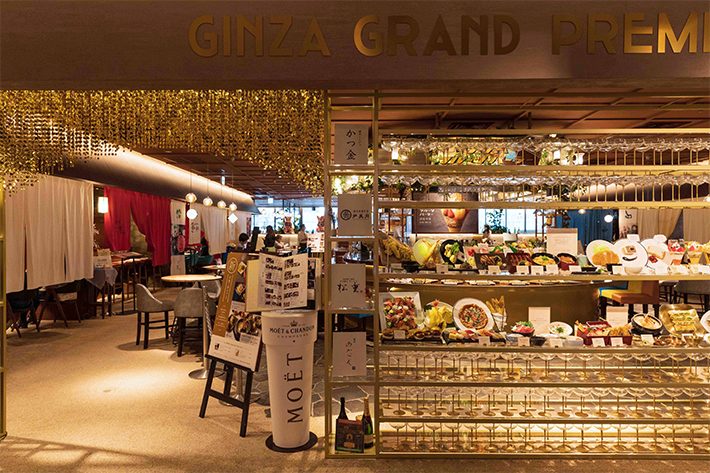
お腹が空くと黙っていられないたちなので、早速のれん街の「韓国薬膳料理 尹美月(ユンミヲル)」で腹ごしらえ。2019年9月26日にオープンし、2014年よりミシュランガイド東京版で二つ星を獲得している「銀座 尹家」の姉妹店。同店のオーナーシェフでありプロデュースする尹美月さんは、韓国政府が指定した韓国伝統料理名人です。野菜がたくさん摂れるし、汁ものも多い韓国料理は外食のスタメンから外せません。
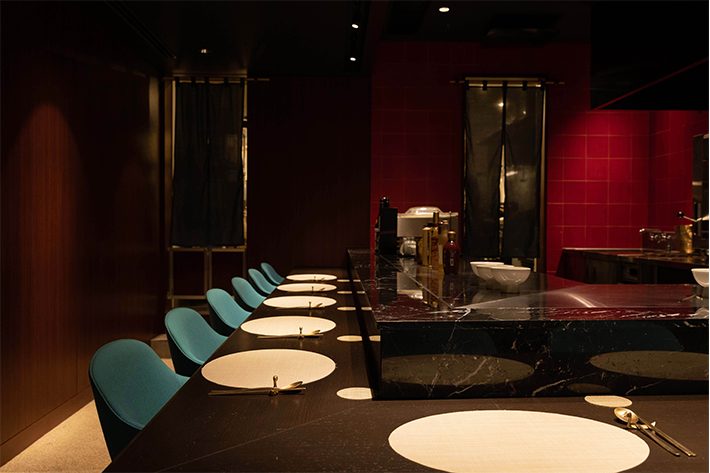
初めて韓国を訪れた時。朝ごはんを食べようとホテル近くのごはん屋さんに入ったら、オーダーも聞かないうちからイシモチ定食「クルビベックパン」が出てきて驚いたっけ。朝のメニューは1種類だけのようで、わかめスープとパンチャン(おかず)付き。懐かしく思い出しながら「スンドゥブとイシモチ、合うわ〜」と唸る。
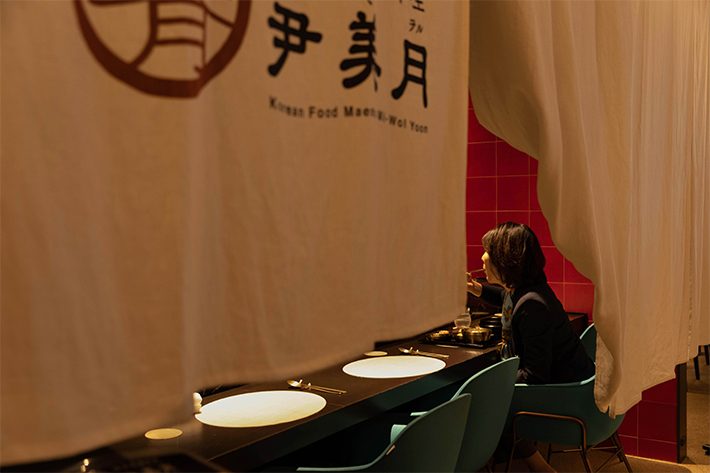
コース中心の本店「銀座 尹家」に対して、こちらはアラカルトをメインにより大衆的な料理を提供しているよう。ナムルやキムチはもちろん、チャップチェ、薬膳豚煮込み「ボッサム」にもそそられるけれど、今回は「スンドゥブ定食」(2,500円 ※以下全て税抜価格)をいただきます。自家製の豆腐、アサリ、エノキ、春菊、白ネギと具だくさん。味つけは唐辛子、牛脂、香味野菜で作る韓国万能調味料「タテギ」で。焼いた干しイシモチには甘酸っぱい薬味ソースを。尹さん曰く、スンドゥブとイシモチは相性が良いのだとか。ひと口味わっただけなのに、トリップ感が凄い!
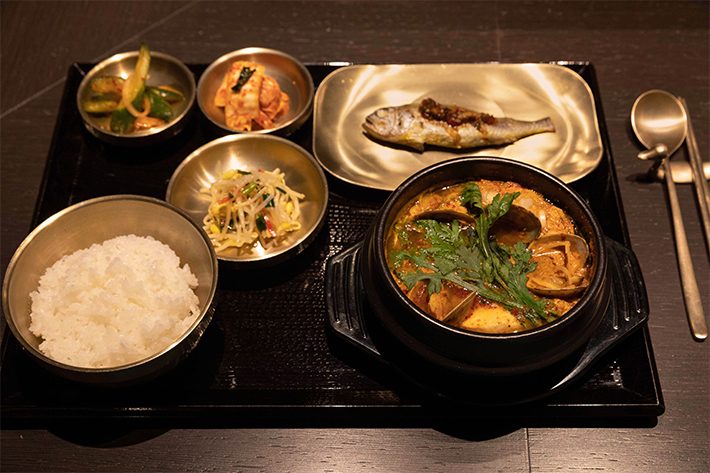
日本では甘めの味付けが多い中、「尹美月」のスンドゥブはキレがあって奥深い。理想的な好みの味わいです。小皿には、豆もやしのナムルと白菜キムチ、キュウリとタマネギのキムチも。提供は店内のみでしたが、3月からはフロア中央のテーブル席でも食べられる出前の“オカモチ”サービスがはじまるそう。こういう遊び心とシャレは効かせるほどいい。

続いて向かったのは、B2Fのフーズフロアにある「CAFÉ EXPERTO(カフェ エクスペルト)」。前から気にはなっていたけれど、お店の様子が少し変わった? コーヒーブレイクに、ふらりと立ち寄ってみる。
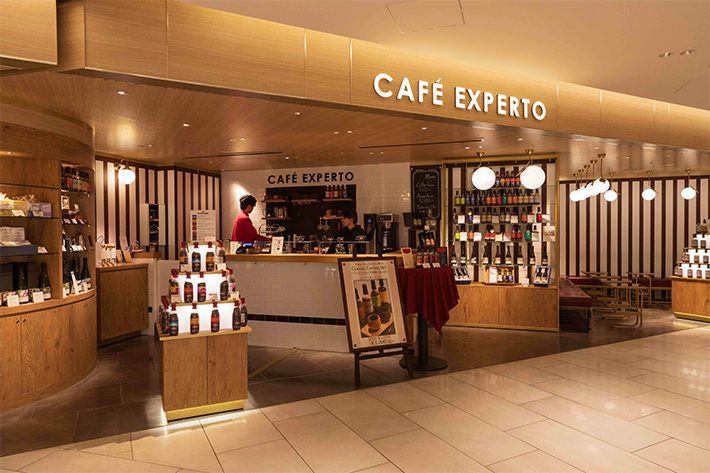
「ブルーマウンテン ジュニパー ピーク農園で、朝日を一番に浴びる特級畑で育ったコーヒーです。コーヒーはフルーツなので、ゆっくり熟していくと完熟になるまで糖度が上がっていく。たっぷりと日の光を浴びた後、ブルーマウンテンミストがかかることにより、クールダウンされる。この寒暖差がゆっくり熟成するのに欠かせないのです」と、バリスタの宮﨑壮史さん。「コーヒーはフルーツ」というインパクト大のひと言。今度どこかでこのフレーズを使わせてもらおう。
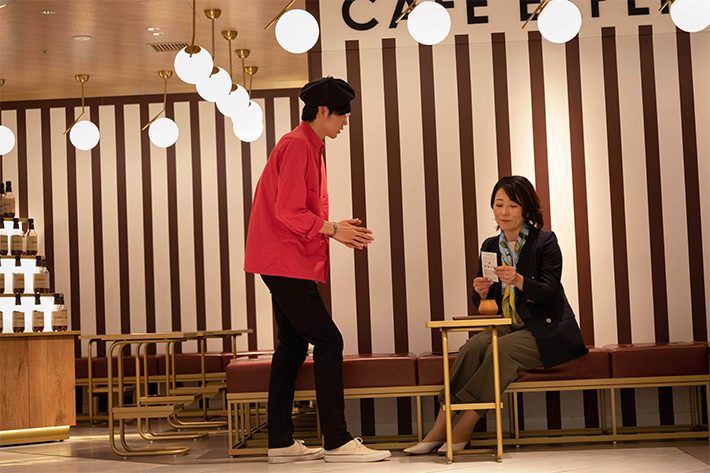
平日限定の2種飲み比べセット1,000円と迷ったけれど、本日のコーヒー(750円〜)をオーダー。見よ、この集中力! ドリッパーに顔を近づけるようにしながら、一定間隔でお湯をドリップ。豆の状態をつぶさに確認し、同時に香りもチェック。コーヒーと向き合う姿勢を側で見ているだけで、何かが覚醒しそう。
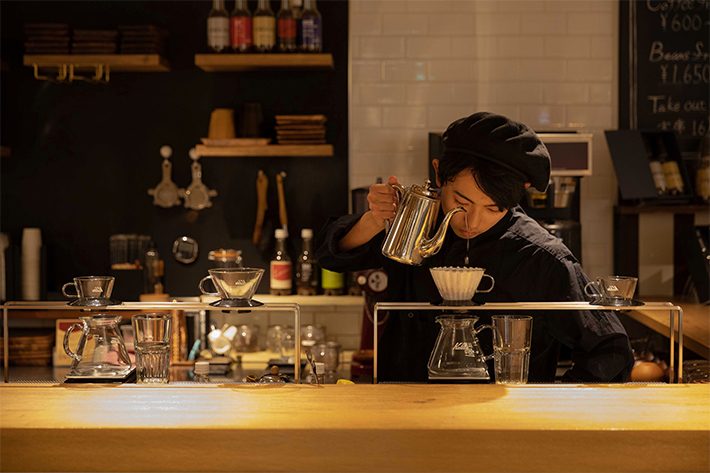
聞くところによると、酸味の概念も変わってしまうのだとか。粗挽きした豆をたっぷりと使うことで余計な苦みや渋みを出さずにバランス良く、マイルドですっきりと美味しい味わいが実現するそう。抽出の効率を上げるため、最初にコーヒーにお湯を含ませて焙煎した後に出る炭酸ガスを放出。コーヒーのエキスをお湯に溶けやすい状態にするようだ。落とし切ったコーヒーは、アロマがすっかり抜け落ちている。適温のお湯を注いだだけなのに…アメージング!
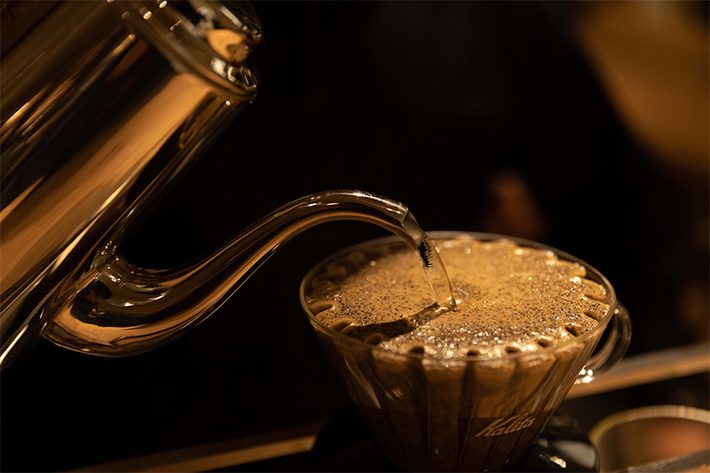
「日本では焙煎ばかり注目されがちですが、当店は主に産地、農園、栽培、品種にもフォーカスを当てています」と、宮﨑さん。耳を傾けていると、自分もコーヒー通になったかのよう。舌だけでなく、耳で味わうことも大事だな。大型施設なのに、まるで商店街や個人店にいるみたいな距離感で接することが出来るから不思議。どんなにいい店でも、結局は人なんだ(持論)。
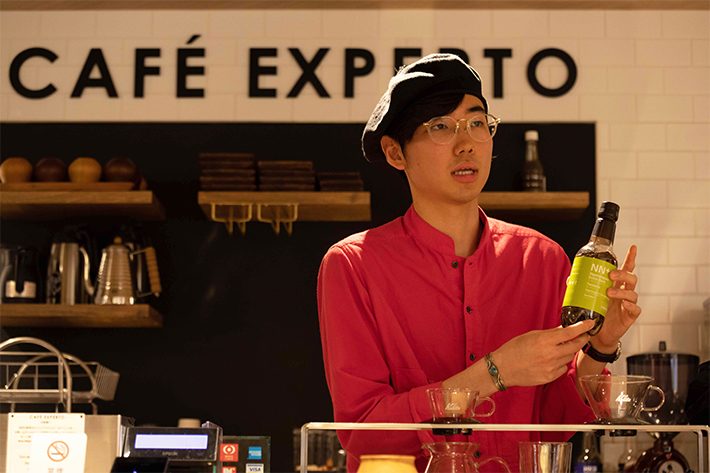
近頃、ギフトを贈る機会が急増。プチプラの気軽なものからスペシャルな逸品まで、情報=ネタのアップデートが追いつかない。そんなところへ来て、頼もしい存在を発見しました。一級畑で穫れる最高クラスの「プルミエ クリュ カフェ」(3,000円〜)。畑の選別、栽培、収穫、精選、輸送、保存に至る全行程に厳しい品質基準があり、クリアした豆だけが冠することが出来るブランドラインです。炭酸ガスによる内圧に耐えられるようシャンパンボトルに入れているそうで、アロマをしっかり閉じ込めてくれるという利点も。冷凍庫に入れずに、常温保存でOKなのも魅力のひとつ。パッケージデザインも絵画のようで素敵だし、見栄えするラッピングもぐっとくる。
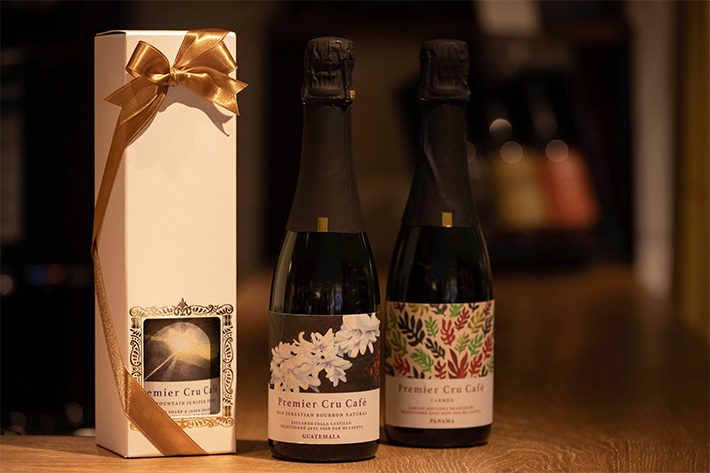
最後は普段あまり足を踏み入れる機会のない、13Fの「THE GRAND GINZA(ザ グラン ギンザ)」へ。約500坪ものフロアにラウンジ、レストラン、VIPルーム、バンケット、チャペルに茶室まで有する複合空間で目指すのは、ラグジュアリーなシェフズカウンター「銀座 極-KIWAMI-」。聞けば、京都・東山にある「高台寺 極-KIWAMI-」の東京店とか。ホテル内のどこかでひっそり営業している麺どころや、デパートに潜むバーみたいに、隠すようにある店はそそられます。
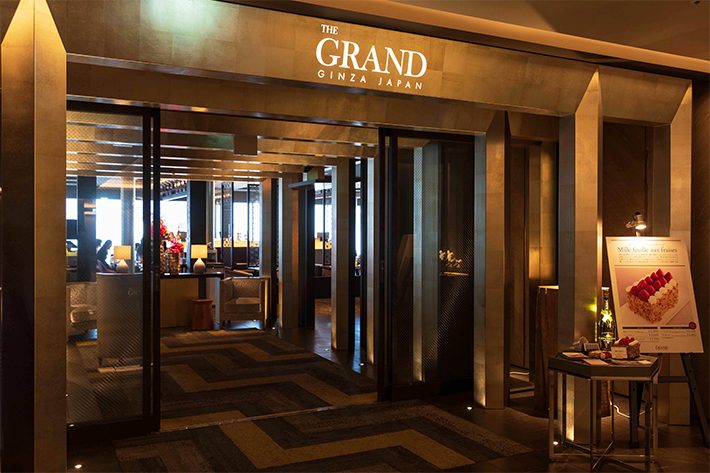
「全国各地の素材を扱いながら、世界各国の食材もプラス。その都度その都度でベストと思う調理法でお出ししています。カウンタースタイルなので、お客さまと会話のキャッチボールを交わしながら、お好みやシチュエーションも考慮します。基本はフレンチですが、食材に合わせて和のテイストを加えたりと、フュージョン料理フレンチにも柔軟に応えます」とは、シェフの齊藤隼人さん。臨機応変な対応、引き出しの多さは実力の証!

ある日の冷前菜は、軽く昆布締めしたシマアジ、北海道産のウニ、キャビア。下には、紅芯大根、緑芯大根、黒大根のシートを忍ばせて。大葉のソース、バルサミコ酢、最後に柑橘のドレッシングをかけて、柚子のゼストを散らしたひと皿。おまかせの極上コースは10品構成(20,000円)。乾杯酒であるシャンパンのミネラル感と相性の良い貝や魚介のアミューズからスタートし、温冷前菜、スープ、フォアグラ料理、魚料理、オマール海老や蟹といった甲殻類の料理、メインディッシュ、デザートという流れ。時間がないゲストには、ショートコースなどで臨機応変に応えるそう。
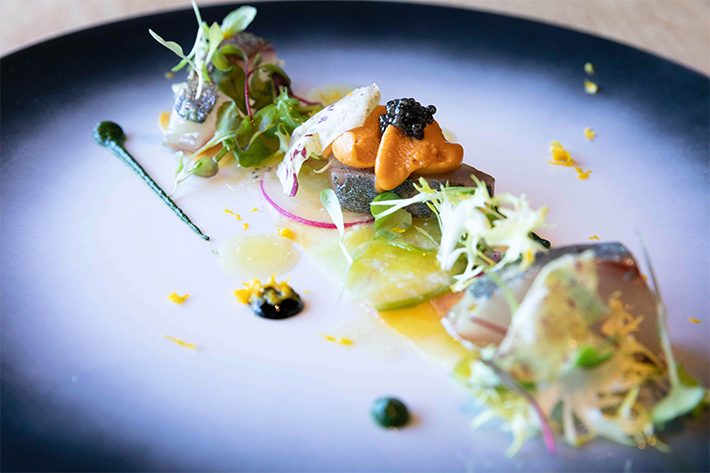
メインディッシュの牛肉は低温でゆっくりと火入れをし、柔らかい状態に。仕上げにお客さまの目の前でフランベし、表面だけ香ばしく。たとえ肉汁が流れ出ようと、肉は熱々で食べたい私には堪えられない逸品。

「かずさ和牛ロース肉と季節の野菜とトリュフの香り」。千葉県・佐原市に系列の宿があるそうで、今回は地元のかずさ和牛をローストで。フランベし、仕上げにイタリア産トリュフのスライスを。このほかにも、天然記念物の見島牛や1年間に50頭しか出荷されない北海道産のアニョードレも登場。

サービスマネージャーでソムリエの高橋正英さんが選んだワインは、「Y by Yoshiki」。アーティストのYOSHIKIとナパ・ヴァレーの醸造家ロブ・モンダヴィJrとのコラボレーションにより生まれたというフルボディの赤ワイン。普段ではなかなかお目にかかれない銘柄に出会えるのも、名ソムリエがいてこそ。
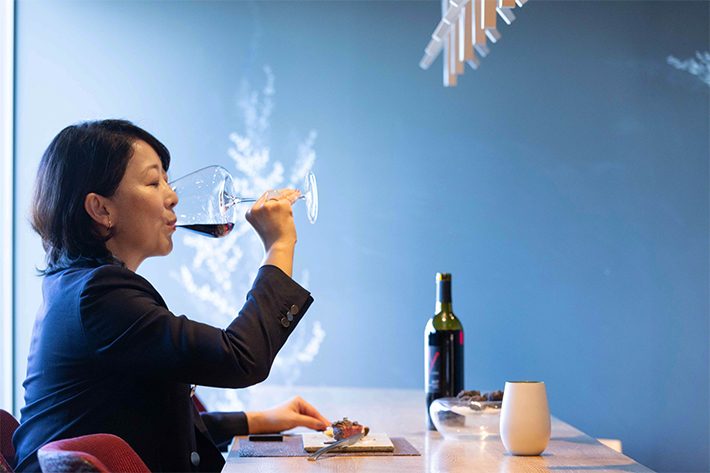
最後にラウンジで提供中の名物スイーツ「銀座マキシム」の苺のミルフィーユを堪能して、4時間ほどのGINZA SIX巡りも終了。美味しい発見もさることながら、それぞれのプロフェッショナルに出会えたことは大きな収穫でした。十分チャージできたつもりだけど、あれもこれもと欲張り根性が顔を出しそう。楽しみは後に残しておくといい。また日を改めて出直します。
Text: Mamiko Kume Photos: Kayoko Ueda Edit: Yuka Okada
I spend so much time on assignment abroad or outside major metro areas, my home/office has been transformed into a temporary storage space. Despite the fewer actual number of trips these days, my job seems to take me out of the city for longer periods. Busily buzzing from here to there suits me, but while being in tranquil villages or in the midst of nature calms the spirit, I have to stay on top of things in Tokyo, the frontlines of the food scene—or else I’ll be out of a job! But when curiosity or stimulation runs low, I can count on GINZA SIX for a recharge. It’s where my pilgrimage begins.
I head first to the Ginza Grand Premium Food Hall on the sixth floor, with its over 1,090 square meters of floor space and specialty eateries for sushi, eel, sukiyaki, beef shabu-shabu, chicken skewers, and deep-fried pork cutlets. Also there are the popular parfaits of Futaba Fruits Parlor, born of a produce store founded in 1941, and Ginza Modern Terrace, a café and restaurant offering Western-style food and sweets. As the name suggests, it’s like a food hall from a Showa-era department store sporting a contemporary upgrade. Yesteryear style pubs and taverns have been booming in recent years, and this successful revival of an erstwhile food format is quintessentially Tokyo’s Ginza. The elaborate plastic food samples on display in front are quite a sight!

When my stomach is empty, it won’t keep quiet. I immediately head out for a meal at the hall’s Korean Food Maestro Mi-Wol Yoon. Opening September 26, 2019, it’s the sister restaurant to Ginza Yunke, awarded two stars in the Michelin Guide’s Tokyo edition since 2014. It’s produced by owner-chef Mi-Wol Yoon, a traditional Korean food maestro, as designated by the Korean government. Korean food provides ample helpings of vegetables, plus plenty of soups and broth. It’s something you want to keep in your starting lineup when eating out.

On my first trip to Korea, seeking breakfast, I went to a place near my hotel. To my surprise, I was served the ishimochi (white croaker) combo meal –even before I gave my order! The breakfast menu had just the one option, it turned out, and it came with wakame seaweed soup and banchan (small side dishes). Feeling nostalgic, I found myself thinking, “Wow, sundubu must go awfully well with ishimochi…”

The flagship Ginza Yunke primarily serves full course meals. But here, Mi-Wol Yoon serves up popular fare mainly á la carte—namul and kimchi, of course, but also japchae and bossam, which is pork broiled in medicinal herbs. This time, I opted for the sundubu (soft tofu stew) combo (2,500 yen; all prices listed before tax). It’s packed with homemade tofu, clams, enoki mushrooms, shungiku (edible chrysanthemum leaves), and white scallions and flavored with Korean all-purpose seasoning dadaegi made from red chili peppers, beef tallow, and potherbs. The dried ishimochi is broiled and served with a sweet-and-sour condiment sauce. According to Chef Yoon, sundubu and ichimochi go very well together. I’ve just had one bite, and it’s a total trip!

The sundubu you find in Japan tends to be sweet. At Mi-Wol Yoon, it has sharpness and depth, my ideal taste sensations. Side dishes include bean sprout namul, Chinese cabbage kimchi, and cucumber and onion kimchi. This was dine-in only, but the restaurant in March will introduce an okamochi (take-out in carrying box) service that lets you eat at the tables in the middle of the floor as well. Such combination of whimsy and chic is always more than welcome.

My next stop is Café Experto on the Food Floor, the second belowground floor. It had caught my eye, and—wait, I think it looks a little different! I headed in for a coffee break.

“The coffee is from a special grove at the Blue Mountain Juniper Peak coffee farm, the first to receive the morning sunlight. Coffee is a fruit, so it’s gradually ripened until fully ripe to increase the sugar content. After receiving ample sun, the Blue Mountain mist sets in and cools the grove. In a word, this temperature difference makes a major difference,” explains the café barista, Miyazaki-san. I’ll have to use his impressive phrase, “Coffee is a fruit,” sometime somewhere.

On weekdays, there’s a special deal that lets you compare two different blends for 1,000 yen. I’m tempted, but I order the coffee of the day (starting at 750 yen). Wow—look at that focus of his! The barista holds his face right next to the dripper while allowing the hot water to drip at a precise rate. He carefully checks the ground beans and the aroma at the same time. Just studying this display of attention and respect for the coffee—there’s a lesson here, I think.

When I ask, it’s something about a change in the concept of acidity. Using a lot of coarsely ground beans makes it possible, I’m told, to create well-balanced, mild, and refreshingly delicious flavors free of excessive bitterness. To increase extraction efficiency, the coffee beans are first soaked in hot water. This process eliminates from the beans carbon dioxide gas produced by roasting, making it easier for the coffee extract to dissolve in hot water. When dripped completely through, the aroma from the beans is completely transferred to the liquid. And all this simply by dripping hot water at the right temperature…amazing!

“In Japan, people tend to focus almost entirely on roasting. Here, we also look at the production region, coffee farm, cultivation methods, and bean variety, among other things,” says Miyazaki-san. As I listen, I feel myself becoming more of a coffee aficionado. It’s not just important to taste, but to listen, too, it seems. GINZA SIX is a big place, but it’s amazing how you can interact with people at close distances, as you would on a shopping street or in an owner-operated shop. No matter how good the store, in my view, it’s the people that matter.

I’ve experienced a sharp increase recently in gift-sending opportunities. From casual, affordable gifts to the truly special, my information, and therefore story ideas, can’t keep up. But I’ve now found a most reliable option: Premier Cru Café (from 3,000 yen), the highest grade of coffee from the best groves. This flagship line offers only coffee meeting the most rigorous standards in all processes—grove selection, cultivation, harvest, sorting, transportation, and preservation. It comes in champagne bottles to withstand the internal pressure of the carbon dioxide, which has the added benefit of bottling up all of the aroma. Store this at room temperature. It doesn’t need to be refrigerated, another draw. The package design is great, too; it’s like a painting. The charming wrapping is wonderful, too.

Lastly, I go to The Grand Ginza on the 13th floor, a restaurant floor where I normally don’t have the opportunity to dine. Measuring more than 1,650 square meters, the multiple-purpose space features a lounge, restaurant, VIP room, banquette room, chapel, and tea room. I’m headed to Ginza Kiwami, a luxurious chef’s counter, the Tokyo version of Kodaiji Kiwami in Higashiyama, Kyoto. It strikes me as a tantalizing hideaway, like a noodle shop secretly located in the corner of a hotel, or a bar hidden away in a department store.

“We use ingredients from around Japan, plus food from around the world. They’re prepared in the way we think ideal at that particular time. We stand here behind the counter—so, as we talk with customers, we also consider what they like and the circumstances. It’s basically French, but we add Japanese touches, depending on the ingredients, for a type of French fusion. We’re pretty flexible in this regard.” So says Chef Hayato Saito. The ability to play things by ear and draw on ample resources in doing so is the sign of a true professional!

The cold appetizer on one day is white trevally lightly salted with kombu, Hokkaido sea urchin, and caviar. Underneath are concealed sheets of red, green, and black daikon. A Shiso sauce, balsamic vinegar, and finally a citrus dressing are dribbled over this dish sprinkled with yuzu zest. The ultimate chef’s course consists of 10 dishes (20,000 yen). It starts with a shellfish or seafood amuse-bouche, which goes splendidly with the minerality of the champagne served for the toast, then proceeds to hot and cold appetizers, soup, a foie gras dish, seafood dish, a crab or lobster crustacean dish, the main dish, and dessert. The course can be truncated for customers without much time—they’re quite flexible.

The beef served as the main dish is cooked slowly at a low temperature until tender. It’s flambéed right in front of the customer to finish. The roasted surface is aromatic. Even with the juices seeping out, I want to eat it hot, a masterpiece I simply can’t resist.

“Kazusa wagyu beef, seasonal vegetables, and aroma of truffles.” There’s an inn in the same corporate group in Sawara, Chiba Prefecture. Today, local Kazusa beef is roasted, then flambéed to finish and spiced with Italian truffles. Sometimes you’ll be served beef from Mishima cattle, an official Natural Treasure, or l’agneau de lait, of which only 50 are shipped annually.

Selected by service manager and sommelier Masahide Takahashi, the wine is Y by Yoshiki, a full-bodied red created through a collaboration between a music artist Yoshiki and Napa Valley winemaker Rob Mondavi Jr. Having a sommelier means getting to learn about an otherwise hard-to-find label.

Lastly, I try the famous Ginza Maxim strawberry mille-feuille currently being served in the lounge, thereby completing my four-hour tour of GINZA SIX. I’ve made some delicious discoveries, but the major takeaway was meeting a number of true professionals. I feel like I’ve gotten a pretty good charge, but nearly everywhere I look, my appetite for more threatens to rear its head. I’ll leave the fun for next time and make a fresh start another day.
Text: Mamiko Kume Photos: Kayoko Ueda Edit: Yuka Okada
粂 真美子
ライター・エディター。「東京カレンダー」「料理王国」の副編集長を経て、フリーランスに。レストランをはじめフードカルチャー、日本各地の食の現場や国内外の旅をメインに取材・執筆。「BRUTUS」のグルマン温故知新、「週刊新潮」の記念日の晩餐など連載を担当中。


